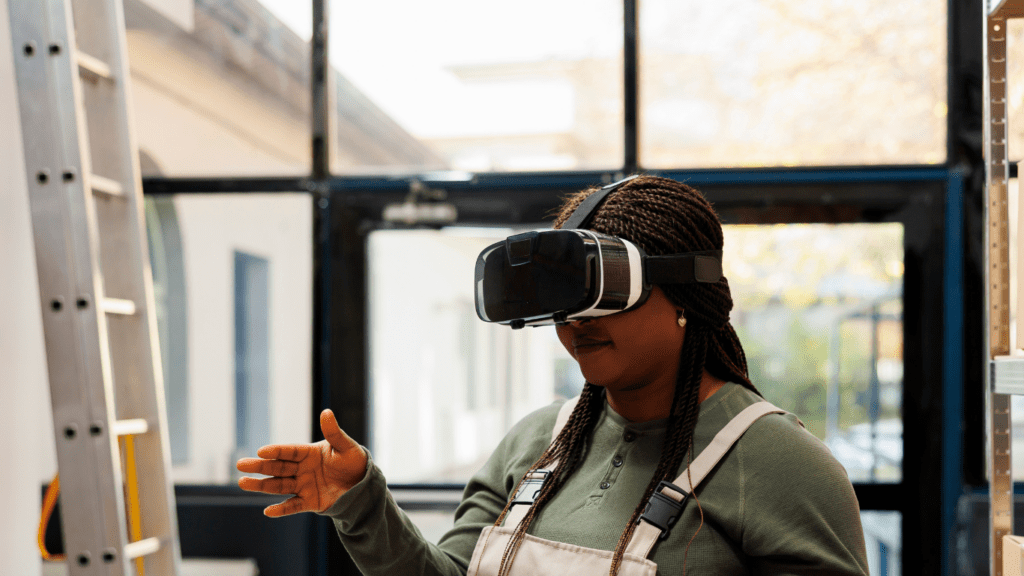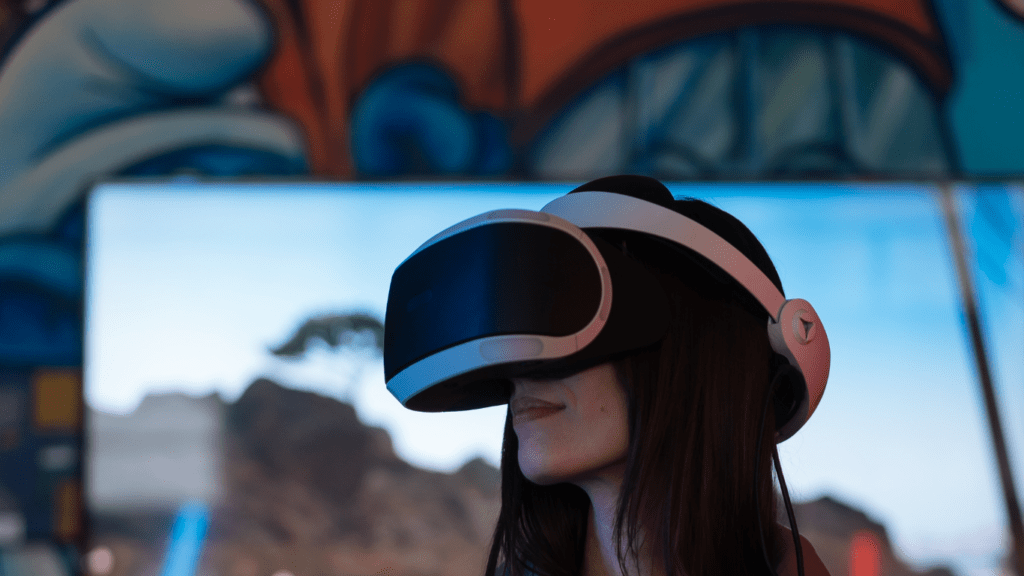Understanding Augmented Reality in Art
Augmented reality (AR) is reshaping the art world by merging digital and physical realms. Artists now harness AR to create immersive, interactive experiences that captivate and engage audiences.
The Basics of Augmented Reality
AR overlays digital content onto the real world using devices like smartphones and AR glasses. Unlike virtual reality, which creates an entirely digital environment, AR supplements reality with digital elements. Artists can enhance their work with animations, sound, and interactive features that viewers access through AR apps.
Key components include:
- Hardware: Smartphones, tablets, AR glasses
- Software: AR development platforms like Unity and ARKit
- Content: 3D models, animations, audio
Evolution of Artistic Techniques with AR
AR has expanded artistic techniques beyond traditional media. Artists can now:
- Create Interactive Installations: A mural can come alive with animations when viewed through an AR app.
- Develop Virtual Galleries: Viewers can explore digital art collections from anywhere.
- Enhance Physical Artwork: Paintings and sculptures can include digital layers, providing a multi-dimensional experience.
These innovations are pushing the boundaries of creativity, allowing artists to explore new forms of expression and engage their audiences in novel ways.
Technologies Driving Augmented Reality Innovations
New hardware and software developments are rapidly advancing augmented reality (AR) for artists. These technologies are enabling more immersive and interactive artistic experiences.
Hardware Developments
Advancements in AR hardware have significantly improved the user experience. High-resolution displays make AR visuals more lifelike. Examples include the Microsoft HoloLens 2, which offers a 52-degree field of view and 47 pixels per degree resolution, and the Magic Leap 1, which provides advanced spatial audio and hand tracking.
Wearable devices like AR glasses are becoming lighter and more comfortable, making prolonged use easier. Processing power in devices has increased, allowing for complex animations and interactions. This hardware supports applications necessary for artistic AR experiences, enabling artists to push creative boundaries.
Software Innovations
Software developments are equally transformative. Advanced AR platforms like ARKit (Apple) and ARCore (Google) provide robust frameworks for developing AR experiences. These platforms support features like:
- motion tracking
- environment mapping
- light estimation
Tools like Unity and Unreal Engine allow artists to create detailed 3D models and animations. Apps such as Adobe Aero offer user-friendly interfaces for designing interactive art.
AI algorithms enhance AR by recognizing objects and gestures, enriching interactions within artistic creations. Real-time rendering makes it possible for artists to see immediate changes, enhancing the creative process. Software innovations ensure that AR continues to evolve, offering new possibilities for artistic expression.
Impact of Augmented Reality on Different Art Forms

Augmented Reality (AR) is revolutionizing art forms, providing new tools for creativity. This section examines how AR impacts visual and performance arts.
Visual Arts and AR
AR introduces multiple layers to visual arts, allowing artists to create immersive experiences. For instance, painters can integrate digital elements into their canvases, transforming static images into dynamic scenes. Applications like Artivive enable viewers to scan paintings with smartphones to see hidden animations.
Murals and street art benefit significantly from AR. Artists can embed digital narratives within physical walls, enhancing storytelling possibilities. The creative process itself evolves as artists use AR to visualize changes before applying them physically.
Digital sculptures represent another innovation. Tools like SculptrVR allow sculptors to craft intricate 3D models, viewable through AR devices. This blend of physical and digital art fosters greater audience interaction, making exhibits more engaging.
Performance Arts Enhanced by AR
AR transforms performance arts by merging real and virtual worlds. For example, theater productions now use AR to create transformative scenic designs, overlaying digital backgrounds and props during live performances.
Dance choreography leverages AR for interactive performances. Apps like JigSpace enable dancers to visualize augmented stage elements, enriching their routines and enabling intricate interactions with virtual objects.
Music concerts enhance audience experiences with AR. Platforms such as Wave let performers incorporate real-time visual effects synced with their music, creating immersive live shows. These advancements make performances more engaging and memorable, offering new realms of creativity.
Incorporating AR into performance arts helps bridge the gap between artists and audiences, delivering multi-sensory experiences that redefine artistic possibilities.
Case Studies: Artists Using Augmented Reality
Artists around the globe use AR technology to redefine artistic expression and audience interaction.
Notable Projects and Their Reception
Many exceptional AR projects demonstrate the potential of this technology in the art world. For instance, Alexa Meade’s “Wanderland” transformed an entire exhibition space into an immersive experience with AR layers. This project received acclaim for its innovative blend of physical art and digital elements. Similarly, Cao Fei’s “Asia One” incorporated AR to create a mixed-reality experience, earning high praise at the Serpentine Galleries.
Another remarkable project is “Acute Art” by KAWS, where AR sculptures were placed in various cities worldwide. User engagement soared as fans interacted with art installations using their smartphones. Reviews noted the project’s capacity to democratize art by making it accessible to a global audience.
Impact on Artist Visibility and Sales
AR dramatically boosts artists’ visibility by enabling interactive online and offline experiences. Artists like Olafur Eliasson use AR to expand reach beyond traditional galleries, as seen in the “Green Light” project, where viewers interact with AR elements through their devices. This approach not only captures global attention but also maintains engagement over time.
Increased visibility often translates to higher sales. For instance, digitally-enhanced artworks command premium prices as collectors value the innovative aspect. AR allows artists to offer unique experiences, creating new revenue streams through selling limited edition digital layers. Platforms like Artivive help artists integrate AR, leading to increased exposure and sales.
Future Trends in Augmented Reality for Artists
Augmented reality (AR) continues to influence the art world’ trajectory, offering new tools and possibilities for artists. Emerging trends hint at a future where AR integration becomes even more seamless and impactful for creative expression.
Predictions for AR in Visual Effects
AR is poised to reshape visual effects in artworks drastically. Precision in overlaying digital elements on physical objects allows for entirely new mixed-media pieces.
For example, holographic elements can interact with traditional sculptures, adding dynamic animations to static forms. Advanced AR tools might enable artists to manipulate digital brush strokes in real-time, creating ever-changing canvases. High-resolution AR displays could render intricate details seamlessly, giving artists more freedom to experiment and innovate.
Potential Challenges and Opportunities
Despite its promising future, AR in art faces several challenges. Creating high-quality AR experiences requires significant technical expertise, which not all artists possess. Additionally, the cost of AR equipment remains prohibitive for some, limiting access to these tools. However, these challenges also present opportunities.
Collaborative efforts between tech companies and artists can bridge the knowledge gap, while advancements in AR hardware could reduce costs over time. Artists who embrace these innovations stand to benefit significantly, pushing the boundaries of their medium and reaching wider audiences.

 Anna Freehill, a key contributor to Avant Garde Artistry Hub, plays a vital role in shaping the platform’s vision. As an author and collaborator, she helps bridge the worlds of art and technology, offering insightful articles that guide artists through the rapidly evolving creative landscape. Anna’s dedication to highlighting art's therapeutic value has contributed to the platform’s focus on mental and emotional well-being through creative expression.
Her involvement in building Avant Garde Artistry Hub has been instrumental in providing valuable resources to artists seeking to enhance their careers. Whether through her writing on business strategies or her support in platform development, Anna is committed to fostering a space where artists can thrive and embrace the future of art.
Anna Freehill, a key contributor to Avant Garde Artistry Hub, plays a vital role in shaping the platform’s vision. As an author and collaborator, she helps bridge the worlds of art and technology, offering insightful articles that guide artists through the rapidly evolving creative landscape. Anna’s dedication to highlighting art's therapeutic value has contributed to the platform’s focus on mental and emotional well-being through creative expression.
Her involvement in building Avant Garde Artistry Hub has been instrumental in providing valuable resources to artists seeking to enhance their careers. Whether through her writing on business strategies or her support in platform development, Anna is committed to fostering a space where artists can thrive and embrace the future of art.